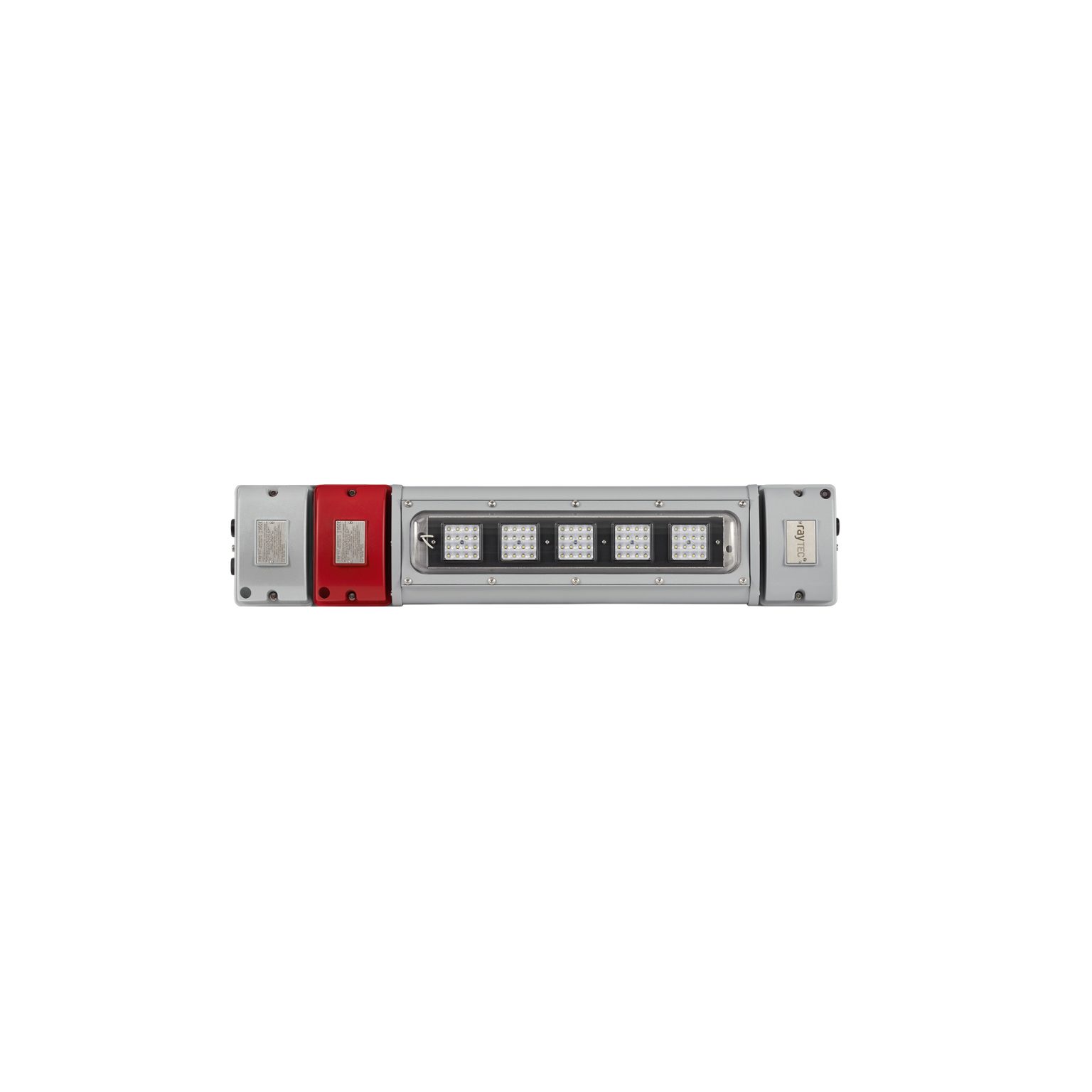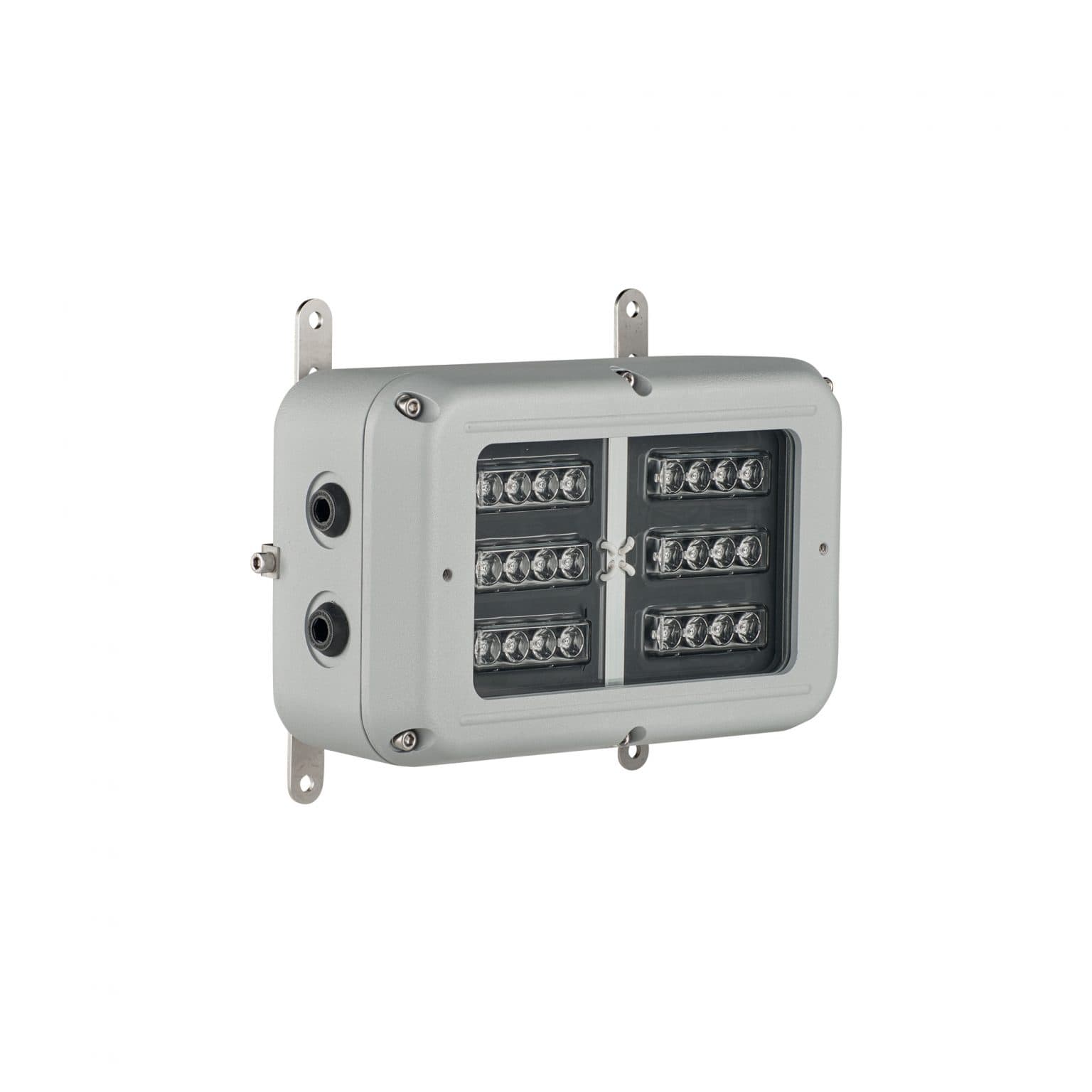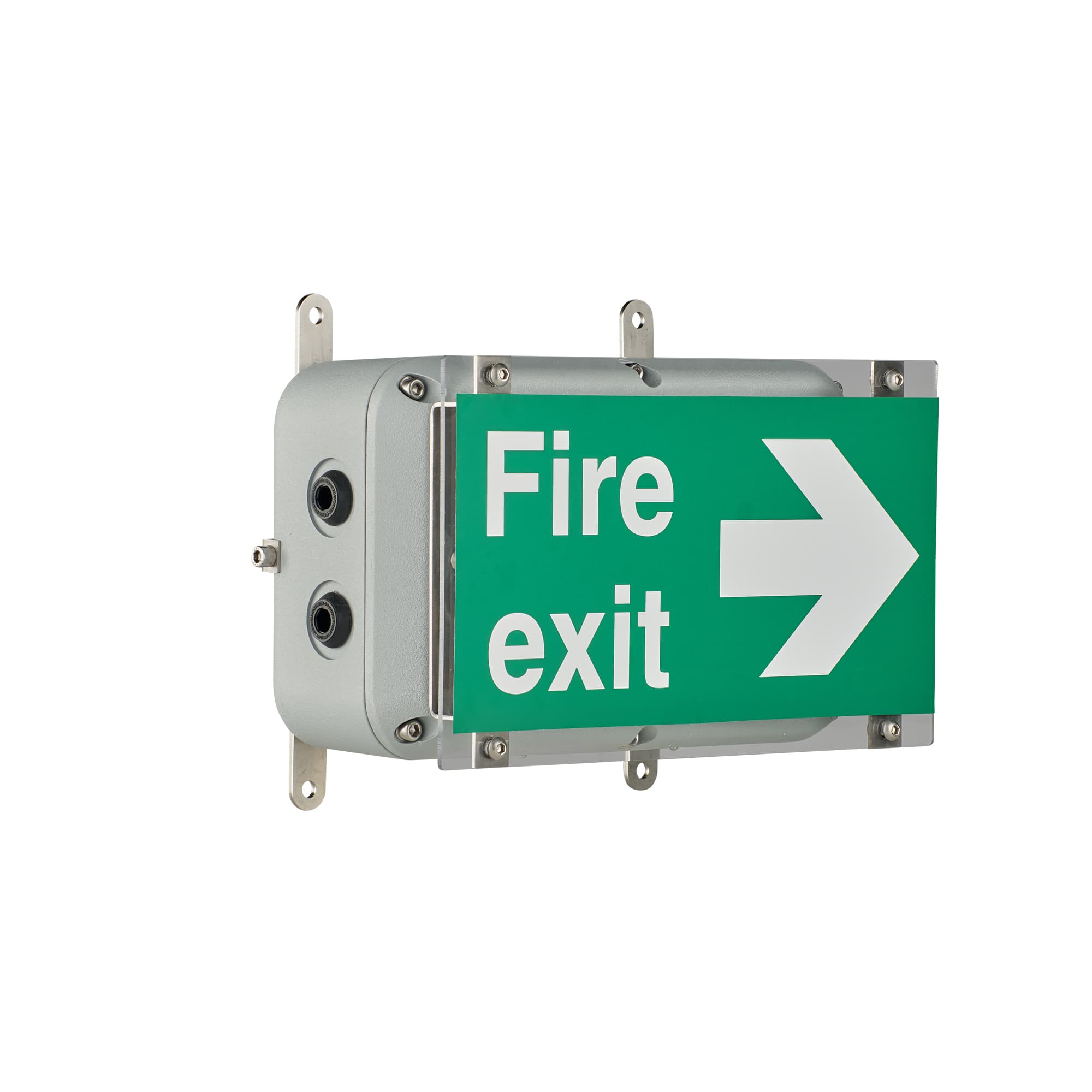An emergency lighting system is one of the elementary safety devices designed to supply light when there is a power cut or during the moment of an emergency. It will ensure that there is sufficient illumination to enable safe evacuation from the hazardous area in the event the normal source of illumination is obstructed. There are many types of emergency lighting solutions and their benefits, which can be applied to ensure safety standards and regulatory compliance.

5 Different Types of Emergency Lighting Systems
1. Emergency Escape Lighting
The emergency escape lighting is installed to provide light along the paths of exit during a state of emergency like a power failure or outbreak of fire. They are installed to facilitate individuals to make rapid evacuations from the building or area in a smoke-filled and dark environment. Standby lighting constitutes mainly exit signs, emergency lighting units, and floor paths that need to be lit up.

2. Standby Lighting
Standby lighting is installed in spaces where illumination is required at all times for safety and functional reasons. Essentially, such lighting activates automatically in the event that the primary power fails to allow areas like stairwells, corridors, or health facilities to remain lit to serve purposes of safety and functionality. Public buildings, hospitals, and office complexes are the most common installations with standby lights to serve an environment where power loss could generate serious problems.
3. High-Risk Task Area Lighting
High-risk task area lighting is utilized wherever some processes have to be preserved even during loss of supply. Such areas may be laboratories, industrial plants, or control rooms, and in these areas, the light must be of such a nature that it allows working on machinery safely, in precise working conditions, and with easy access to apparatus. It makes sure that people can carry out operations alongside navigating high-risk areas in a way that does not compromise the safety requirements.
4. Bulkhead Lighting
Bulkhead lighting is often a ruggedly designed lighting solution used for most applications that are harsh, such as outdoor situations, industrial locations, or even risky places like tunnels or factories. They are robust and designed to withstand all forms of withers due to severe weather conditions, chemicals, or impacts.

5. Exit Sign Lighting
One of the most critical emergency lighting systems is that relating to exit sign lighting. These illuminated signs mark the points and evacuation routes, should some emergency arise so that people can easily locate the safe passageways.

Benefits of Installing Emergency Lighting Systems
Ensuring safety during power outages
One of its most important functions is that it provides lighting in case the main power supply breaks down. In this way, people are in a position to move safely under obscure conditions; therefore, it is less likely to cause accidents or injuries. Be it residential, commercial, or industrial purposes, emergency lighting offers essential visibility in power breakdown conditions.
Compliance with legal standards and regulations
Emergency lighting is legally necessary for ensuring compliance with standard safety standards in many countries. Building, fire safety, and regulations on workplace safety usually require the installation of emergency lighting in specific public and private locations. Businesses avoid fines and liabilities in court while ensuring the safety of occupants due to such compliance.
Reduced panic in emergency situations
Panic is often an instinctive situation during a fire, earthquake, or evacuation. Well-lit passageways through the exitways significantly lower panic, directing people away from danger. If there are proper emergency signs and well-lit exitways, this does not jar the brain as much, and the people’s minds become much calmer and more orderly to ensure a safer and more efficient exit process.
Long-term cost savings with LED emergency lighting
The LED emergency lighting systems are energy-saving with a long lifespan. LEDs consume power that is much less compared to the commonly used incandescent or fluorescent emergency lights. This cuts down on energy consumption and maintenance costs. In the long run, an investment in LED emergency lighting saves significantly with the maximum likelihood of assured performance in an emergency.
What Is The Purpose of Emergency Lighting?
1. Battery Backup
While one basic necessity of an emergency lighting system is battery backup, emergency lighting supports lights in the event of a primary power interruption by employing backup batteries. Typically, these are engineered to last for many hours in situations where emergency personnel cannot arrive right away, allowing ample time for occupants to evacuate or to support operations at least in the short term.
2. Self-testing Capabilities
Many of today’s emergency lighting systems are self-testing. These systems can test the battery health, light health, and other component health so that they are functioning correctly. Of course, this would reduce the need for a direct test of the facility. It may provide an alarm signal to maintenance personnel if there is a fault, so failures at critical lighting times are avoided.

3. Remote Monitoring and Control
Advanced systems can even be remotely monitored and controlled. In this case, facility managers will be able to check on the status of the emergency lighting fixtures from a central point. This may even be checking on the level of the battery or test results and general system health. Therefore, problems are identified and corrected at the earliest so that optimal conditions are preserved for the emergency lighting system.
4. LED Efficiency
The new standard used in emergency lighting is energy-efficient and longest life-LED lights. First, since it consumes relatively less power as compared to the prevalent lighting methods, there are greater efficiency values obtained in its use at every cost of energy. High life also translates into not having to replace them too often, thus having fewer needs for maintenance and replacement costs.
Legal and Compliance Requirements
Emergency lighting systems have many legal and compliance requirements that operate to protect both members of the public and employees. These requirements apply to designing, installing, and maintaining emergency lighting solutions in various settings. Here are the key requirements applicable to emergency lighting systems:
- International Building Code requires emergency lighting in commercial and residential buildings to allow for safe evacuation in case of an emergency.
- NFPA 101: The Life Safety Code has given detailed guidelines regarding requirements for emergency lighting, including illumination levels on exit paths, the time duration of lighting, and placing criteria.
- Occupational Safety and Health Administration (OSHA): The OSHA standards on workplace settings require that emergency lighting be provided in every workplace to allow for quick exit during an emergency, such as in the case of a fire outbreak.
- European Standards (EN 1838): In Europe, the European Standard (EN 1838) gives a minimum requirement for emergency lighting within public buildings, stretching to cover even emergency escape routes and illuminated signs.
How to Maintain Emergency Lighting Systems
Emergency lighting systems should regularly be checked to ensure it is working properly at the right time. Here are some key steps for maintaining emergency lighting systems:
- Inspect the emergency lighting system monthly to ensure that all lights are on and functioning properly. Ensure that all exit signs work and are not covered or damaged by anything else.
- Ensure that all backup batteries are fully charged and in good condition. Replace those nearing the end of the life cycle so that there will be no breakdown in operation during power failure.
- Perform annual full system testing: Under simulated loss of power, verify that emergency lighting remains operative for the designed time duration. Determine compliance with regulatory requirements and functional operation of the system.
- Clean and Maintain Fixtures: Clean the light fixtures regularly, so that no dust or debris is blocking the light. The effect of dust and grime can dim the brightness of emergency lights, hence making them unavailable in cases of emergency.
- Maintenance Record: Document all the tests and maintenance operations performed on inspection. This record will keep track of the system’s performance and ascertain compliance with local regulations and building codes.
Choosing the Right Emergency Lighting System for Your Needs
When choosing a fire emergency lighting system, quite a number of aspects should be taken into consideration to ensure that it is put to the proper use in your building. The building size and layout are the first considerations. Extensive lighting coverage is needed in large buildings or multilevel structures, whereas smaller places usually require fewer lights, but again strategically positioned to ensure proper visibility of evacuation routes.
The usage type of the building also plays a role in the selection of lighting. Hospitals and healthcare facilities require certain lighting to maintain functions within the critical areas in the event that services must be retained during emergency conditions. The risk level of the environment must be understood; industrial or hazardous areas will have explosion-proof or weather-resistant solutions applied to ensure lighting meets safety standards.
On the other side, the installation of energy-saving LED lighting reduces the operating cost and maintenance requirement since LEDs consume less power and have a far longer lifespan than traditional lights.
Why Choose AJV Tech for Emergency Lighting Solution?
At AJV Tech, they provide the best emergency lighting solutions for buildings that guarantee each building’s needs are met. Their lighting systems are built to last and are maximized for efficiency so that when it really matters, during cuts or emergencies, they can give in with full functionality. They also offer a long list of options such as energy-efficient LED emergency lights, escape lighting, and more, that comply with all industry standards on safety..
Conclusion
A good quality emergency lighting system will give you a safe building and conformance to local regulations. Such a good quality system will guide people to safety during power outages, reduce panic in emergencies, and continue on with operations in critical areas. AJV Tech offers comprehensive, energy-efficient lighting solutions that will provide assurance and long-term savings on operational costs. Choose to protect your building and its occupants with reliable emergency lighting from AJV Tech.
FAQs
1. How does an emergency lighting system work during a power outage?
It works with emergency batteries to light when it loses the main supply from the power source, by default, when it will lose the power supply.
2. How often should emergency lighting systems be tested?
Test monthly for function or a full system test in a year.
3. What is the difference between emergency escape lighting and standby lighting?
Emergency lighting will light up the exit routes whereas standby lighting will hold the power on to the functioning areas in case there is a power outage.
4. Can I use emergency lighting systems in outdoor settings?
Yes. Bulkhead or LED exit signs are used outdoors, they are rated for outdoor.
5. What is the average lifespan of an emergency lighting system?
The life of most LED emergency lights is about 50,000 hours.
6. How does an automatic emergency lighting system function during a fire?
It operates with loss of supply or smoke, by illumination of the escape routes.
7. What is the difference between maintained and non-maintained emergency lighting?
Maintained lighting is always on compared to non-maintained, which remains off until its operation due to loss of supply or emergency.
